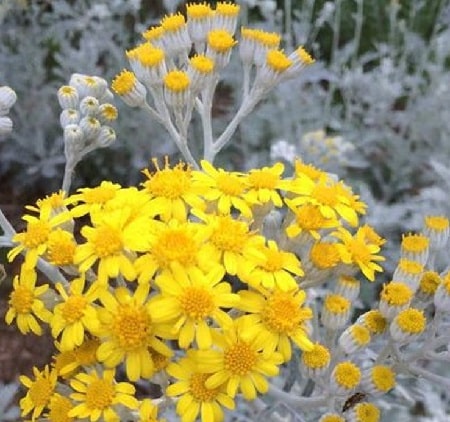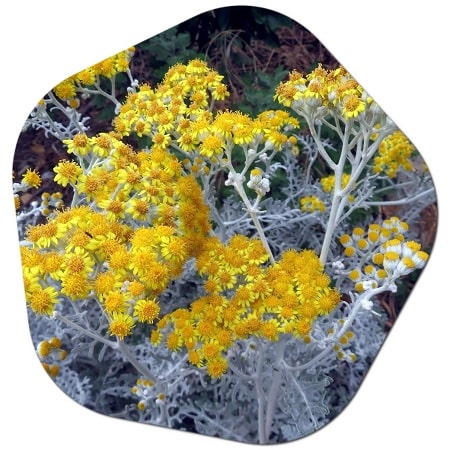Cineraria, also known as Senecio cruentus or Pericallis x hybrida, is a popular flowering plant often grown for its colorful and daisy-like flowers. Cineraria is typically cultivated as an indoor or outdoor plant, depending on the climate and growing conditions. Here are some considerations for where to plant Cineraria:
- Indoor Cineraria:
- Light: Cineraria thrives in bright, indirect light. Place it near a window with filtered sunlight or provide artificial light if necessary, especially during the winter months when natural light may be limited.
- Temperature: Maintain a moderate indoor temperature, ideally around 60-70°F (15-24°C). Keep the plant away from drafts, and avoid extreme temperature fluctuations.
- Humidity: Cineraria appreciates higher humidity levels. You can increase humidity around the plant by using a humidity tray or regular misting with water.
- Container: Plant Cineraria in a well-draining potting mix in a container with drainage holes. Choose a pot with the appropriate size to accommodate the plant’s root system.
- Outdoor Cineraria:
- Climate: Cineraria is often grown as an outdoor annual or biennial plant in temperate climates. It prefers cool, mild temperatures and is well-suited for spring and fall planting. In areas with warm summers, it’s best to plant Cineraria in the cooler seasons to avoid excessive heat.
- Light: Plant Cineraria in a location with partial to full shade, especially in regions with hot summers. In cooler climates, it can tolerate more sun, but protection from intense midday sun is still advisable.
- Soil: Ensure well-draining soil with good organic content for outdoor Cineraria. The soil should be consistently moist but not waterlogged.
- Spacing: When planting multiple Cineraria plants, provide adequate spacing to allow for proper air circulation and growth.
- Garden Beds and Borders:
- Cineraria can be used in flower beds and borders to add color and visual interest to your garden. In this setting, follow the outdoor planting guidelines and ensure the plants are appropriately spaced.
- Containers and Hanging Baskets:
- Cineraria can also be grown in containers or hanging baskets, adding a splash of color to patios, balconies, or entryways. Use a well-draining potting mix and water the plant regularly to maintain moisture levels.
- Seasonal Displays: Cineraria is often used for seasonal displays and can be planted in gardens or containers during the spring or fall.

Cineraria is known for its vibrant, delicate flowers and is commonly used for short-term ornamental purposes. Keep in mind that it may not be a long-lasting plant in all climates, especially in regions with hot and dry summers. Proper care and attention to its specific growing requirements will help you enjoy its colorful blooms to the fullest.
Can Cineraria be grown indoors?
Yes, Cineraria (Senecio cruentus or Pericallis x hybrida) can be grown indoors as a houseplant. It is often grown indoors for its colorful, daisy-like flowers and is appreciated as a short-lived ornamental plant. Here are some tips for growing Cineraria indoors:
- Light: Cineraria prefers bright, indirect light when grown indoors. Place it near a window that receives filtered sunlight or provide artificial light if natural light is insufficient, especially during the winter months. Avoid placing it in direct, intense sunlight, as this can scorch the plant.
- Temperature: Maintain a moderate indoor temperature for Cineraria, ideally between 60-70°F (15-24°C). Protect the plant from drafts, and try to avoid extreme temperature fluctuations.
- Humidity: Cineraria appreciates higher humidity levels. You can increase humidity around the plant by using a humidity tray or by regularly misting the plant with water. This is especially important in dry indoor environments.
- Watering: Keep the soil evenly moist but not waterlogged. Water the plant when the top inch (2.5 cm) of the soil feels dry to the touch. Be cautious not to let the soil dry out completely. Use a saucer to catch excess water and prevent the plant from sitting in standing water.
- Fertilization: Feed Cineraria with a balanced, water-soluble fertilizer diluted to half strength every 4-6 weeks during the growing season (spring to early fall). Avoid over-fertilizing, as it can damage the plant.
- Pruning: Deadhead spent flowers to encourage continuous blooming and maintain a tidy appearance. Additionally, remove any yellowing or dead leaves as they appear.
- Container: Plant Cineraria in a well-draining potting mix in a container with drainage holes to prevent waterlogging. Ensure the pot is the appropriate size for the plant’s root system.
- Pest and Disease Management: Keep an eye out for common houseplant pests like aphids, mealybugs, and spider mites. Treat any infestations promptly with appropriate measures, such as insecticidal soap or neem oil.
- Duration: Cineraria is typically grown as a short-lived houseplant, primarily for its colorful flowers. It may not have a long lifespan compared to some other houseplants.

Cineraria is a popular choice for indoor gardening, and its vibrant flowers can add a burst of color to your indoor spaces. With proper care and attention to its specific growing requirements, you can enjoy its blooms for the duration of its indoor life.
Is cineraria an annual plant?
Cineraria plants can be grown as annuals, biennials, or perennials, depending on the specific species and the climate in which they are cultivated. The term “cineraria” is used for different plants in the Asteraceae family, and their growing habits can vary. Here’s a general breakdown:
- Cineraria as Annuals: Some commonly cultivated species, such as Senecio cruentus or Pericallis x hybrida, are typically grown as annuals in many regions. They are often planted in gardens or containers for their vibrant and colorful blooms during a single growing season. In areas with harsh winters or hot summers, these plants may not survive beyond one year.
- Cineraria as Biennials: In some cases, Cineraria may be considered biennials, meaning they have a two-year life cycle. These plants usually produce foliage in the first year and then flower in the second year. They may self-seed to continue the cycle.
- Cineraria as Perennials: Certain species of Cineraria, particularly those adapted to milder climates, can be grown as perennials. These plants may come back year after year under suitable conditions, typically in regions with mild temperatures and favorable growing conditions.
It’s important to know the specific species and cultivar of Cineraria you are dealing with, as this will determine its growing habit. Additionally, the climate and local conditions will influence whether Cineraria is grown as an annual, biennial, or perennial in your area. When cultivating Cineraria, it’s essential to consider its life cycle and requirements to ensure a successful growing experience.
